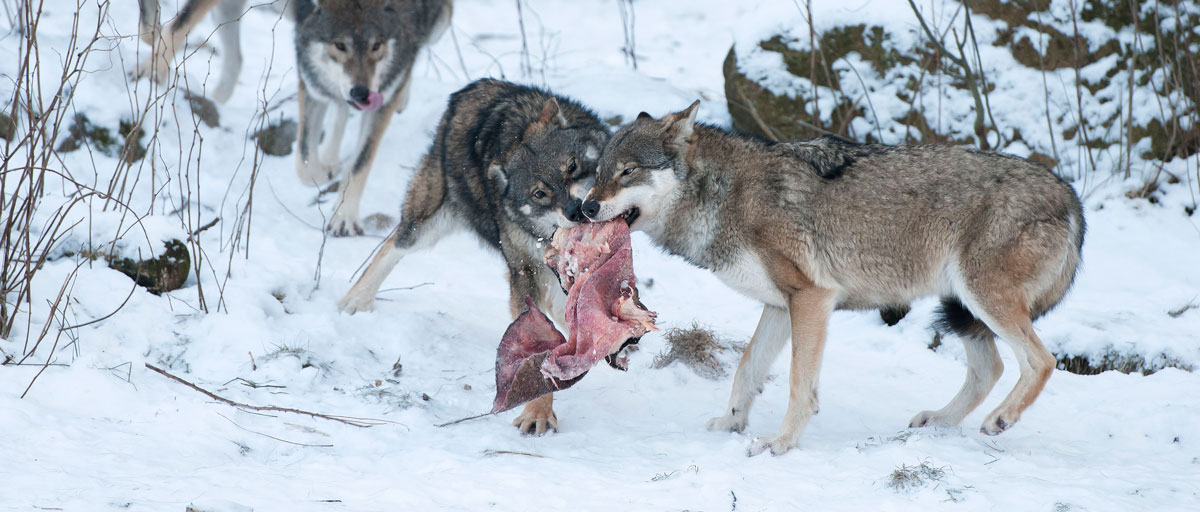
A new article in PLOS Computational Biology has studied the dilemma of either hunting thus keeping the spoils to oneself or in packs sharing the bounty with others. Photo: I. Petterson/Azote
prey-foraging
Sharing is caring, or...?
When is it useful to share information about the location of a prey and when is it not?
- New article in PLOS Computational Biology studies the dilemma of either hunting thus keeping the spoils to oneself or in packs sharing the bounty with others
- Study shows a simple “rule of thumb” that may help unravel this complex behavior
- The “lone wolf search strategy” is most attractive when the time to find prey and the time taken to consume prey are both short. Cooperation is better when it takes longer to find and consume prey
Wolves in Canada, lions in the Serengeti or fishermen in the Southern Ocean, either hunt alone keeping the spoils to themselves or in packs sharing the bounty with others. Deciding whether to tell fellow predators about some tasty prey is not an easy decision and requires the predator to weigh up many pros and cons.
But when is it useful to share information about the location of a buffalo or rich fishing and when is it foolish? Researchers from Princeton University and the Stockholm Resilience Centre looked for clues for cooperation. The paper, published in PLOS Computational Biology shows a simple “rule of thumb” that may help unravel this complex behavior.
The findings are potentially relevant for ecological conservation work but also anywhere there is a limited resource and a group of consumers wanting access whether it is oil or mineral resources, fishing grounds or stockbrokers in financial markets.
Centre researche James Watson explains, “Fishermen tend to share information about salmon or other migratory species. But they’re more secretive and even territorial about fish stocks that remain more or less in the same place. In Scandinavia mushroom hunters are quite secretive about the location of wild mushrooms in forests, for example.”
Three timescales control decisions
Using mathematical models of the behavior of predators and prey, the authors found the lone wolf search strategy is most attractive when the time to find prey and the time taken to consume prey are both short. Cooperation, though, is a better strategy when it takes longer to find and consume prey, for example a large buffalo or rich fishing ground.
“This boils down to one central trade-off: the benefit of acquiring information about prey location, and the cost of sharing prey with other predators.”
The team identified three essential timescales that control the rate at which predators consume prey: how quickly prey move, how quickly prey are found by searching predators, and how quickly prey are consumed by predators once they’ve been found.
“A large buffalo takes a long time to consume, so over this time period, other predators might move in and share the meat” says Watson.
The next step for the research is to use the new general mathematical formulae to calculate the payoff of sharing information, for different environments.
“We want to identify evolutionary stable strategies in social groups. This will help us understand how animals, people and businesses collectively organize around resources,” says Watson.
Barbier, M., Watson, JR. 2016. The spatial dynamics of predators and the benefits and costs of sharing information. PLoS Comput Biol 12(10):e1005147. doi:10.1371/journal.pcbi.1005147
James Watson's research focuses on understanding crucial feedbacks between physical, ecological and social processes. This includes how people's social-norms are shaped by the environment they work in (i.e. the fish they might harvest, the technology they use to do so and the society they live in).






